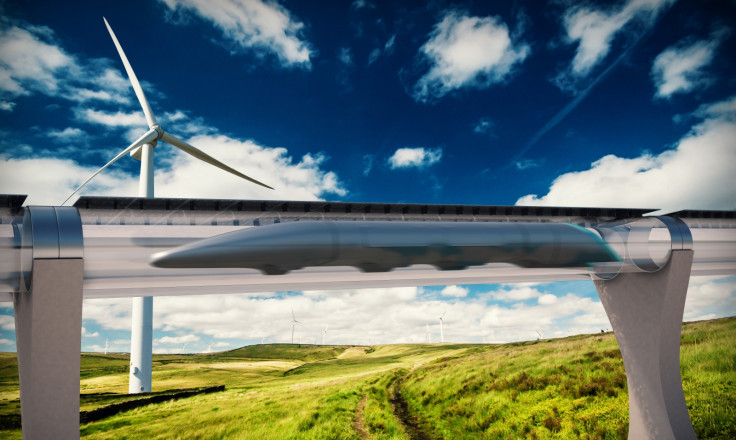Hyperloop: How the 760mph train will levitate above a magnetic track
Hyperloop Transportation Technologies has revealed how its Elon Musk-inspired bullet train will levitate on a magnetic field as it blasts between stations at the speed of sound. The train will use a technology called passive magnetic levitation which its creators claim is more efficient and safer than the levitation system used by Maglev trains in Japan.
Where Maglev trains require many power stations to be installed along the side of the track, each feeding electricity to copper cables in the track, which become an electromagnet once charged, the Hyperloop system has a passive magnet on each train carriage and an aluminium track containing loops of wire. This setup is more like a pair of regular magnets, rather than an electromagnet which requires a constant supply of electricity to work.
Bibop Gresta, chief operations officer of Hyperloop Transport Technologies (HTT), explained how this system is better than Meglev. "Utilising a passive levitation system will eliminate the need for power stations along the Hyperloop track, which makes this system the most suitable for the application and will keep construction costs low."

Gresta continued: "From a safety aspect, the system has huge advantages, levitation occurs purely through movement, therefore if any type of power failure occurs, Hyperloop pods would continue to levitate and only after reaching minimal speeds touch the ground."
Where a power failure on a Maglev system would see the train fall into the rails at any speed (potentially hundreds of miles per hour), HTT's trains naturally levitate above the track at around 20mph and over; the theory is the same as that behind levitating Bluetooth speakers, which use two magnets facing each other to hold a speaker in the air above its base station.

The passive magnetic levitation system was developed by Dr Richard Post and his team at Lawrence Livermore National Labs, California, had has been exclusively licensed to HTT for use on the Hyperloop. The company says its floating trains can accelerate to 760mph between stations, faster than a commercial airliner. The trains will travel in a tube with almost all of its air removed, reducing drag and helping the carriages reach high speeds with minimal effort.
Costs are kept low by using solar power and recharging the onboard batteries through regenerative braking, a system also used by Formula One cars and electric vehicles like the Tesla Model S. HTT says construction on the Hyperloop starts later in 2016 and the first passenger service will begin in 2018.
HTT is not to be confused with Hyperloop Technologies, another company setting out to build a Hyperloop train. Both firms began work after Tesla CEO Elon Musk published a white paper in 2013 detailing how such a train might work. His plans described a train capable of taking passengers from Los Angeles to San Francisco, a journey of 350 miles, in 30 minutes. Musk says he will not be involved with building a Hyperloop, as his commitments lie with being CEO of Tesla and space transportation company SpaceX, and chairman of Solar City, a solar energy provider.
© Copyright IBTimes 2025. All rights reserved.






















